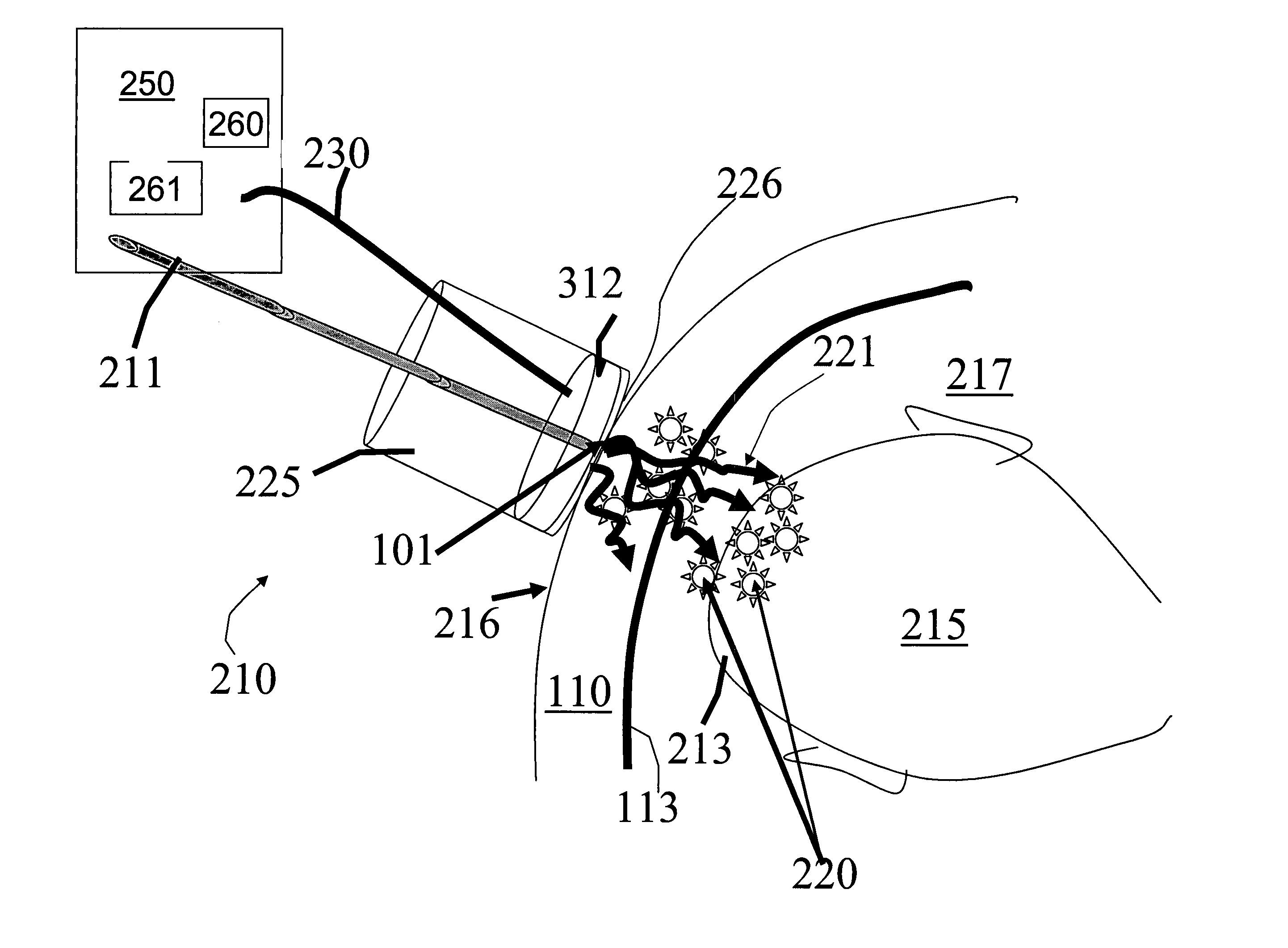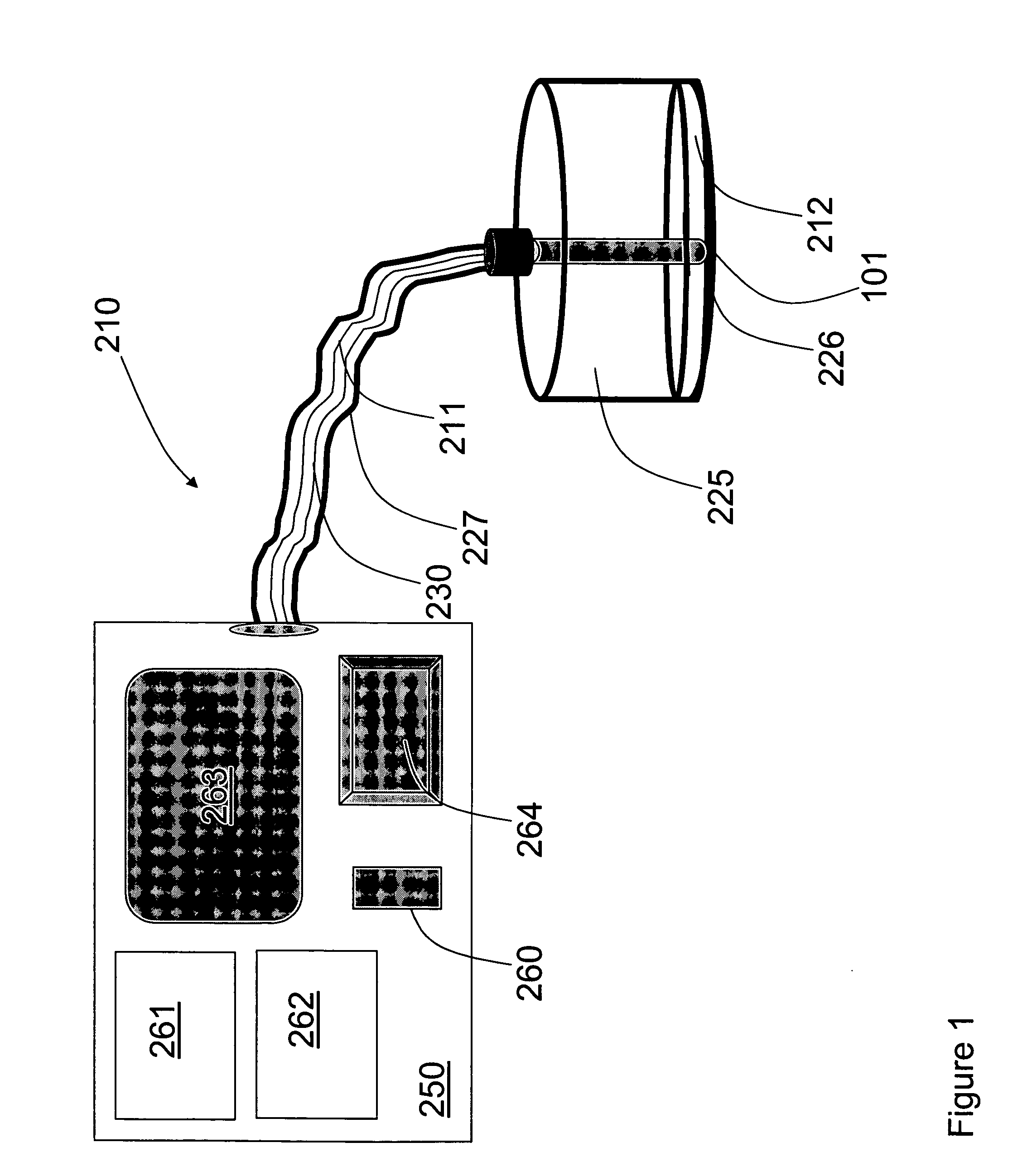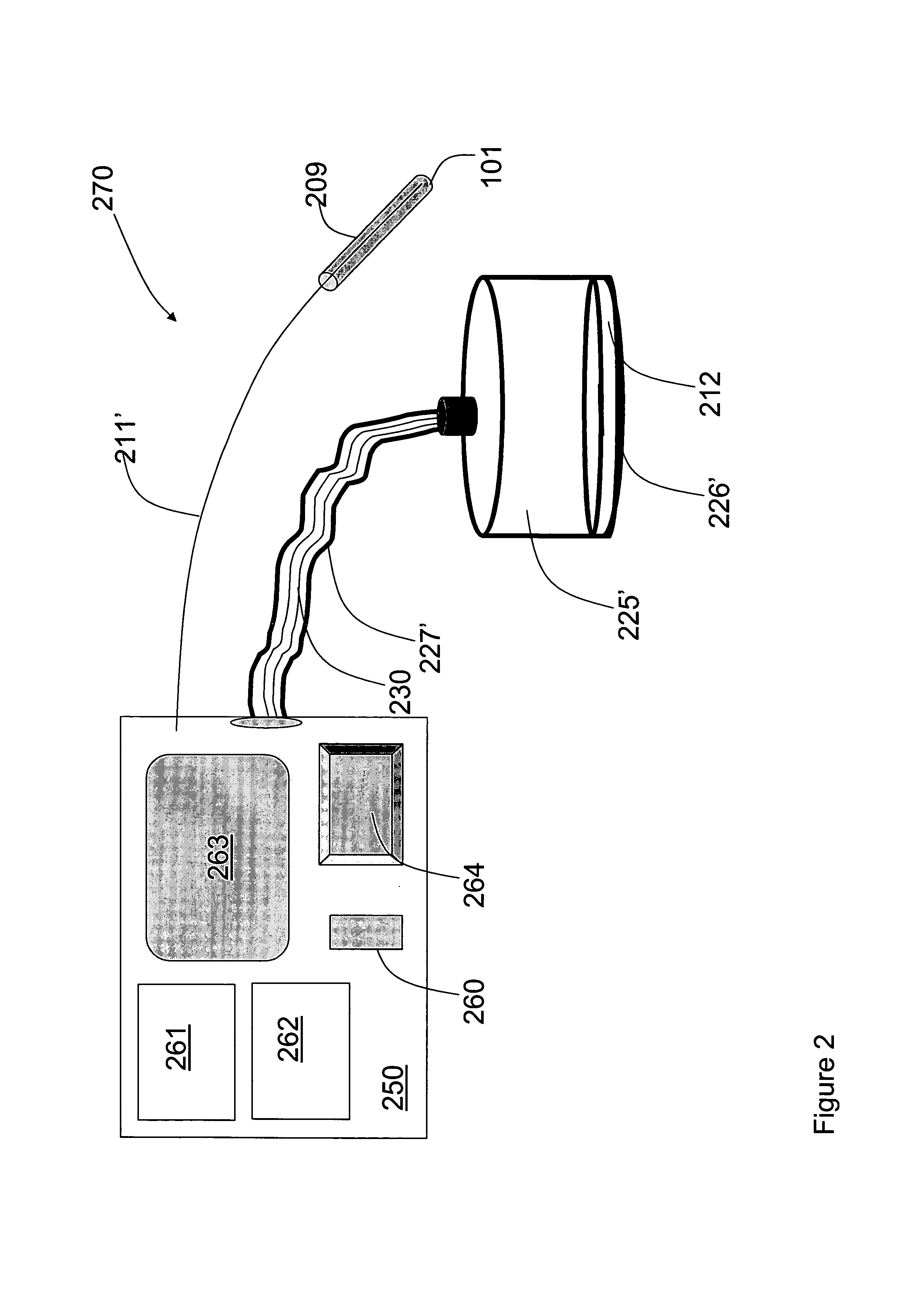Photoacoustic analyzer of region of interest in a human body
a photoacoustic analyzer and human body technology, applied in the field of medical devices and methods, can solve the problems of fetal death, non-reassurance of fhr always associated, inaccurate readings in the presence of ambient light, etc., and achieve the effect of improving the signal to noise ratio (snr) of the detection system and safer light energy for illumination
- Summary
- Abstract
- Description
- Claims
- Application Information
AI Technical Summary
Benefits of technology
Problems solved by technology
Method used
Image
Examples
Embodiment Construction
[0055]FIG. 1 shows a schematic diagram of a tissue analyzer 210 of the present invention. The tissue analyzer 210 includes an illumination unit 260 (e.g., a pulsed laser); a processor 261 having a memory 262, a data presentation utility (display) 263 and an input / output control panel 264; and an acoustic unit 212. In the present example, the illumination unit and processor form parts of a common controller 250. A hand held (or fixed) probe head 225 has a probe surface 226 that is adapted for application onto a body surface. The probe head 225 is connected to the controller 250 by light guiding means (optical fiber 211, for example, located in a flexible sheath 227. The optical fiber 211 conducts light energy from the illumination unit 260 to a distal end 101 of the optical fiber 211 located at probe surface 226 in order to irradiate body tissues adjacent to the probe surface 226 when the probe surface is applied to a body surface. The acoustic unit 212 is located in the probe head 2...
PUM
| Property | Measurement | Unit |
|---|---|---|
| wavelength | aaaaa | aaaaa |
| wavelength | aaaaa | aaaaa |
| time | aaaaa | aaaaa |
Abstract
Description
Claims
Application Information
 Login to View More
Login to View More - R&D
- Intellectual Property
- Life Sciences
- Materials
- Tech Scout
- Unparalleled Data Quality
- Higher Quality Content
- 60% Fewer Hallucinations
Browse by: Latest US Patents, China's latest patents, Technical Efficacy Thesaurus, Application Domain, Technology Topic, Popular Technical Reports.
© 2025 PatSnap. All rights reserved.Legal|Privacy policy|Modern Slavery Act Transparency Statement|Sitemap|About US| Contact US: help@patsnap.com



